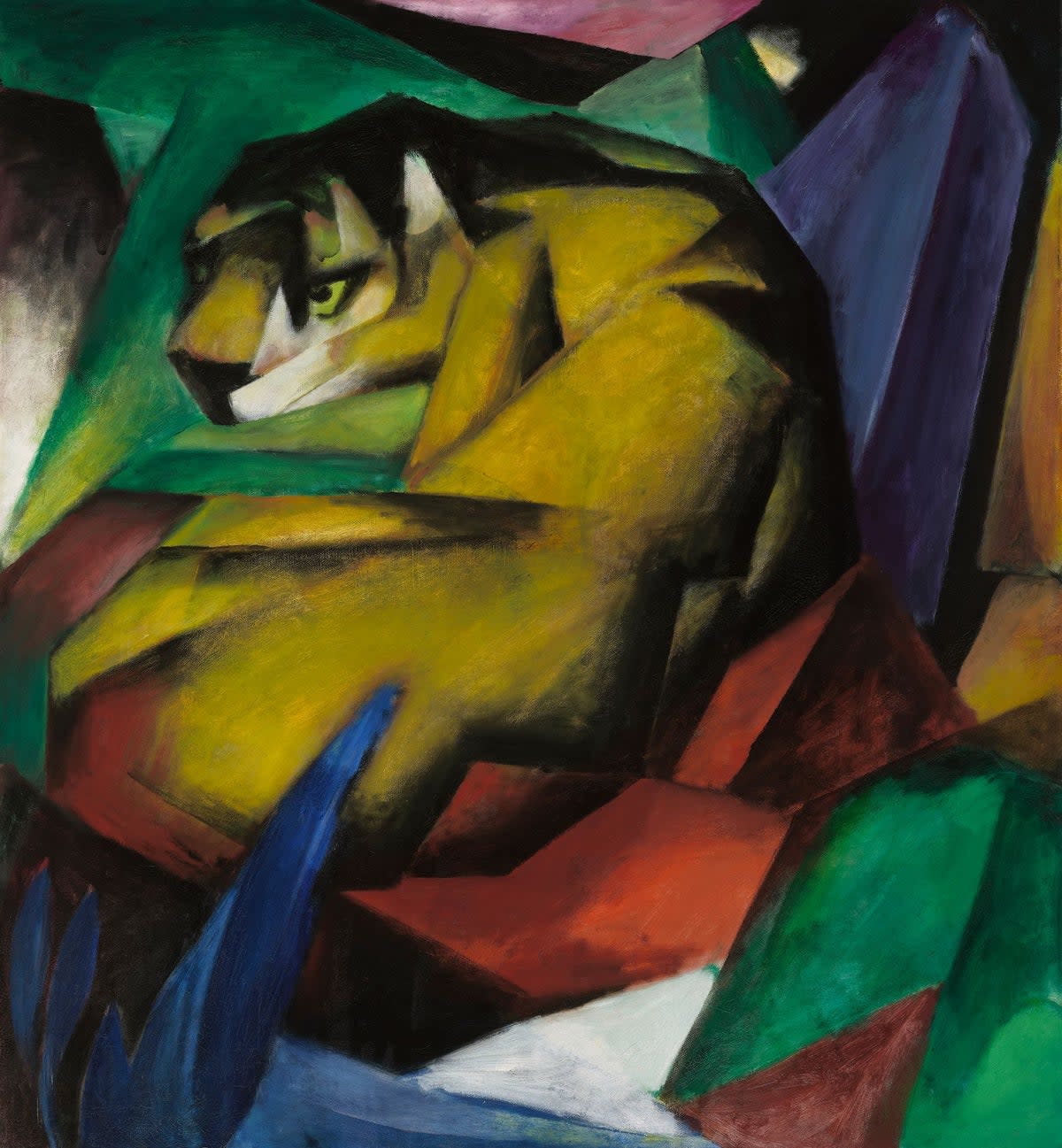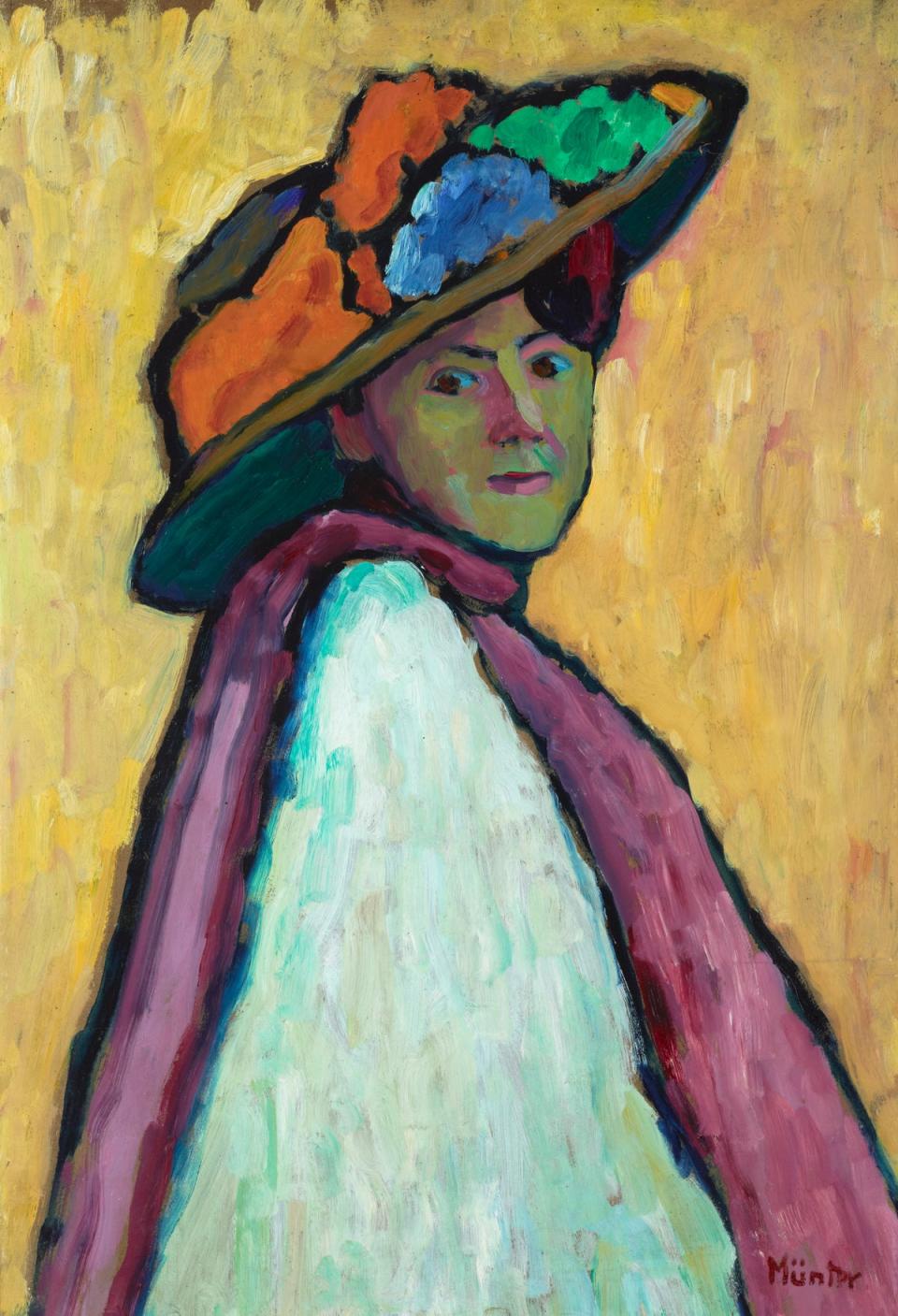Expressionists at Tate Modern: a wonderful exhibition about an extraordinary art movement

The Blue Rider is the name of a picture, a periodical and a movement, all centred on the intense, bespectacled figure of Wassily Kandinsky.
He painted one of the pictures with that title, edited the magazine, which ran to one edition and a touring show, and led the movement, which was broadly Expressionist.
But really this exhibition is about the movement: a cosmopolitan group of friends and artists centred in Munich and in Bavaria before the First War.
They ranged in inspiration and subject matter from pure abstraction to figurative art; from traditional Catholic iconography to theosophy; and from colour theory to Shostakovich’s atonal scale.
It began as an offshoot of the NKVM, or New Association of Artists in Munich, and included a striking number of the pioneers of modernism and abstraction. There’s Paul Klee, Robert Delaunay, August Macke and Marianne Werefkin.
With Kandinsky, you get the whole spectrum, from bold domestic interiors in bright colours to the explosive abstraction of Cossacks, 1910 to 1911; from his theatrical poetry (roughly on the theme, “there’s nobody there!”) to his engagement with Shostakovich.
He told the composer that what he was trying to do in music, he, Kandinsky was attempting in art. In successive rooms we encounter both music and a mounted camera-spectrum through which we peer at Franz Marc’s Deer in Snow to see his use of the colour prism.
It was an international group; Russians, French, Germans, Jews of different nationalities. But whereas the formative partnership within the Blue Rider is usually considered to be Kandinsky and Franz Marc (see his glorious Tiger on the poster), here Marc’s place is given to Gabriele Münter, a considerable woman artist.

Her pared-down portrait of one of the group, Jawlensky, listening puzzled to Kandinsky on art theory, must have represented quite a common reaction at the time. Her portraits are both expressive of personality – see the bold outlines of her Portrait of Marianne Werefkin with her glorious cartwheel hat – and halfway to abstraction.
The group centred for a time on the Bavarian village of Murnau; I would give a lot to know what the locals made of them and especially Kandinsky’s take on a cow, a glorious play on colour with no obvious resemblance to a ruminant.
There’s one room containing Marc’s animal pictures, Kandinsky’s All Saints and Deluge and Marta Franck-Marc’s lyrical and figurative Three Kings which is so glorious and wildly diverse as to defy any easy definition of the movement.
The Tate makes much of the multifarious religious inspiration of the group but what emerges here is a strong and unmistakable grounding in Christianity – including the pictures inspired by Bavarian devotional work.
Eventually, we get to the Blue Rider periodical itself, including a facsimile edition, and what a remarkable expression it was of the way in which it took on board all the arts, not just the visual but drama and music, and what a range of visual art at that, from Germany to Japan.
This final room includes not just Kandinsky’s Votive Painting, yes, a blue rider, for the almanac, but August Macke and Franz Marc’s woodcuts on paper, some of the most beautiful, economical images of the show.
The radical tone of the whole enterprise says Weimar Republic, but all this happened within the constraints of the old Empires… it’s heartbreaking to think of what it might have come to.
This is a wonderful exhibition, marred only by the Tate’s imposition of its fatuous preoccupations with gender and colonialism on the work of an extraordinary movement which, like so much else, was crushed in the Great War.
Tate Modern, to October 20; tate.org.uk

 Yahoo News
Yahoo News 
